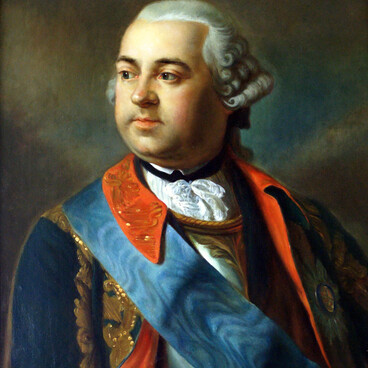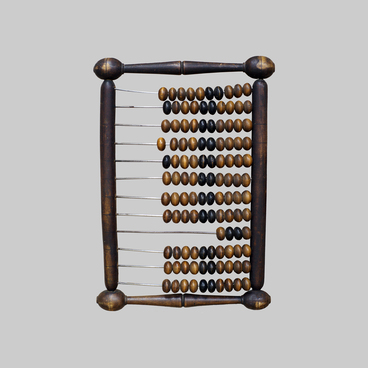The exposition presents the work of Udmurtia’s very own painter Evgeny Skobelev. The artist has graduated from V. I. Surikov Moscow State Academic Art Institute. In 1990, the artist painted a portrait of Pyotr Ilyich Tchaikovsky for the 150th anniversary of the composer. Another work by Udmurtia native, artist Evgeny Skobelev, was the painting “Tsesarevich Alexander Nikolaevich visits the Votka plant in 1837.” It is dedicated to the composer’s father, engineer Ilya Petrovich Tchaikovsky, the head of the Votka plant. He is depicted in the center of the picture.
In the spring of 1837, in Tsarskoe Selo, a multi-unit horse train set off. The 19-year-old heir to the throne, Grand Duke Alexander Nikolaevich—the future Emperor Alexander the Second, was traveling on that train. By the order of Emperor Nicholas the First, his son set off on a long journey across Russia with an extensive retinue. The Tsesarevich’s retinue included poet VasIly Zhukovsky—he is depicted to the right of the Tsesarevich. Zhukovsky took part in the development of the trip’s program and its route together with the geographer, economist and statistician Konstantin Arsenyev.
The romantic poet has expressed his interest and enthusiasm when he learned about the hot factory halls and delved into the intricacies of the dirty manufacturing process at the factory. He expressed his interest in his diary and his travel notes; this account is also corroborated by other sources.
At the Votka plant, mining director Ilya Tchaikovsky received the guests and accompanied them everywhere. Upon meeting the visiting party, he handed the heir ‘a briefcase containing six sheets with drawings of machines, ’ and then subjected him and his retinue to an hour-long reading and extensive commentary on the ‘statistics of the plant and all factory operations’.
During that same visit, Alexander Nikolayevich was presented with a model of a puddling oven: ‘His Highness examined everything with curiosity, and he was particularly fascinated by a model of a rolling device in a puddling factory, which received his approval. Actual state councilor Zhukovsky, lieb-surgeon Enokhin, and Colonel Yuryevich took turns spinning up the wheels, and His Highness, with his own hands, placed lumps and plates of wax mixed with graphite — which represented iron in this exercise — under the rolls.’
The goal was achieved — Alexander liked the model he was presented with. Although Colonel Yuryevich did not concern himself with technical details: ‘Always in the fire’s bosom, like Cyclops, they forge steel and iron for the needs of the artillery and the navy, ’ he wrote to his wife after visiting the Votka plant. After his visit to the Votka plant, in the early morning of May 23, the Tsesarevich continued his journey and set off with his retinue to the city of Perm via Okhansk.
In the spring of 1837, in Tsarskoe Selo, a multi-unit horse train set off. The 19-year-old heir to the throne, Grand Duke Alexander Nikolaevich—the future Emperor Alexander the Second, was traveling on that train. By the order of Emperor Nicholas the First, his son set off on a long journey across Russia with an extensive retinue. The Tsesarevich’s retinue included poet VasIly Zhukovsky—he is depicted to the right of the Tsesarevich. Zhukovsky took part in the development of the trip’s program and its route together with the geographer, economist and statistician Konstantin Arsenyev.
The romantic poet has expressed his interest and enthusiasm when he learned about the hot factory halls and delved into the intricacies of the dirty manufacturing process at the factory. He expressed his interest in his diary and his travel notes; this account is also corroborated by other sources.
At the Votka plant, mining director Ilya Tchaikovsky received the guests and accompanied them everywhere. Upon meeting the visiting party, he handed the heir ‘a briefcase containing six sheets with drawings of machines, ’ and then subjected him and his retinue to an hour-long reading and extensive commentary on the ‘statistics of the plant and all factory operations’.
During that same visit, Alexander Nikolayevich was presented with a model of a puddling oven: ‘His Highness examined everything with curiosity, and he was particularly fascinated by a model of a rolling device in a puddling factory, which received his approval. Actual state councilor Zhukovsky, lieb-surgeon Enokhin, and Colonel Yuryevich took turns spinning up the wheels, and His Highness, with his own hands, placed lumps and plates of wax mixed with graphite — which represented iron in this exercise — under the rolls.’
The goal was achieved — Alexander liked the model he was presented with. Although Colonel Yuryevich did not concern himself with technical details: ‘Always in the fire’s bosom, like Cyclops, they forge steel and iron for the needs of the artillery and the navy, ’ he wrote to his wife after visiting the Votka plant. After his visit to the Votka plant, in the early morning of May 23, the Tsesarevich continued his journey and set off with his retinue to the city of Perm via Okhansk.



